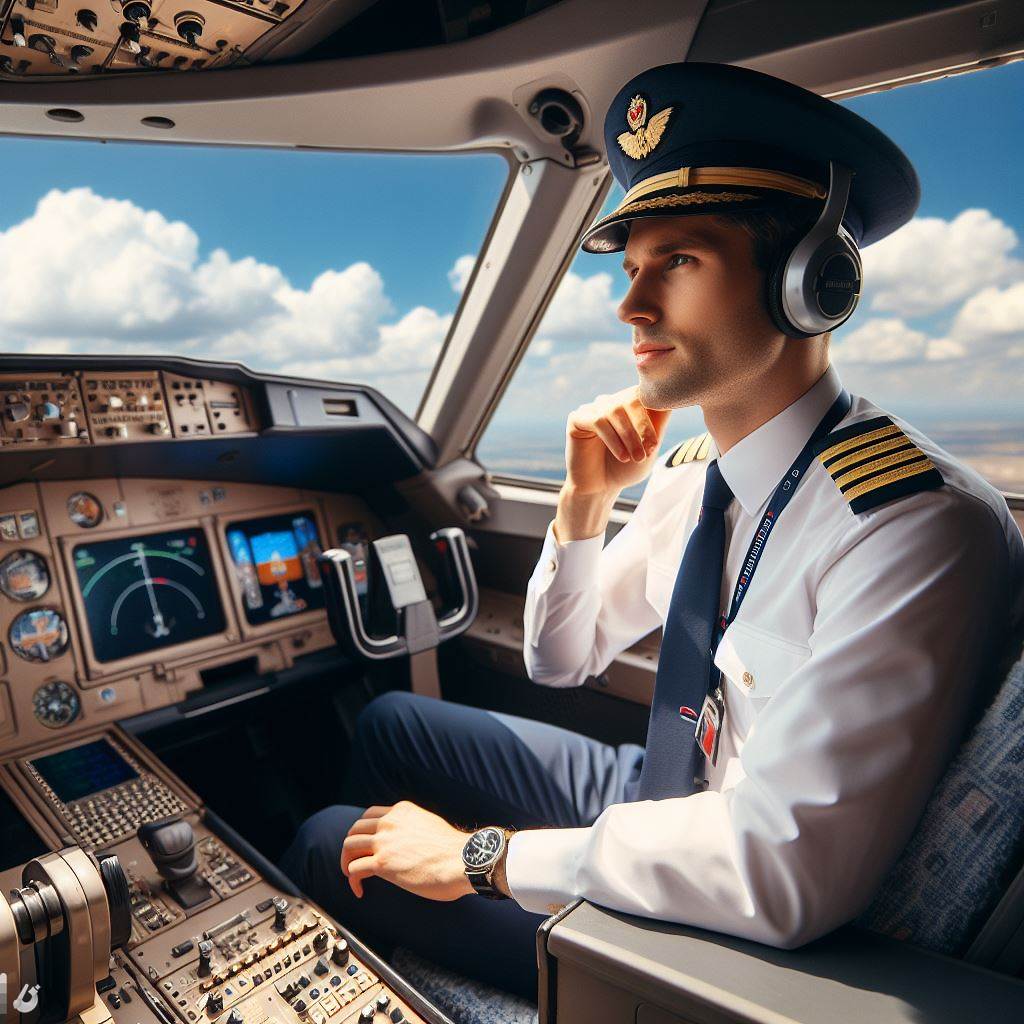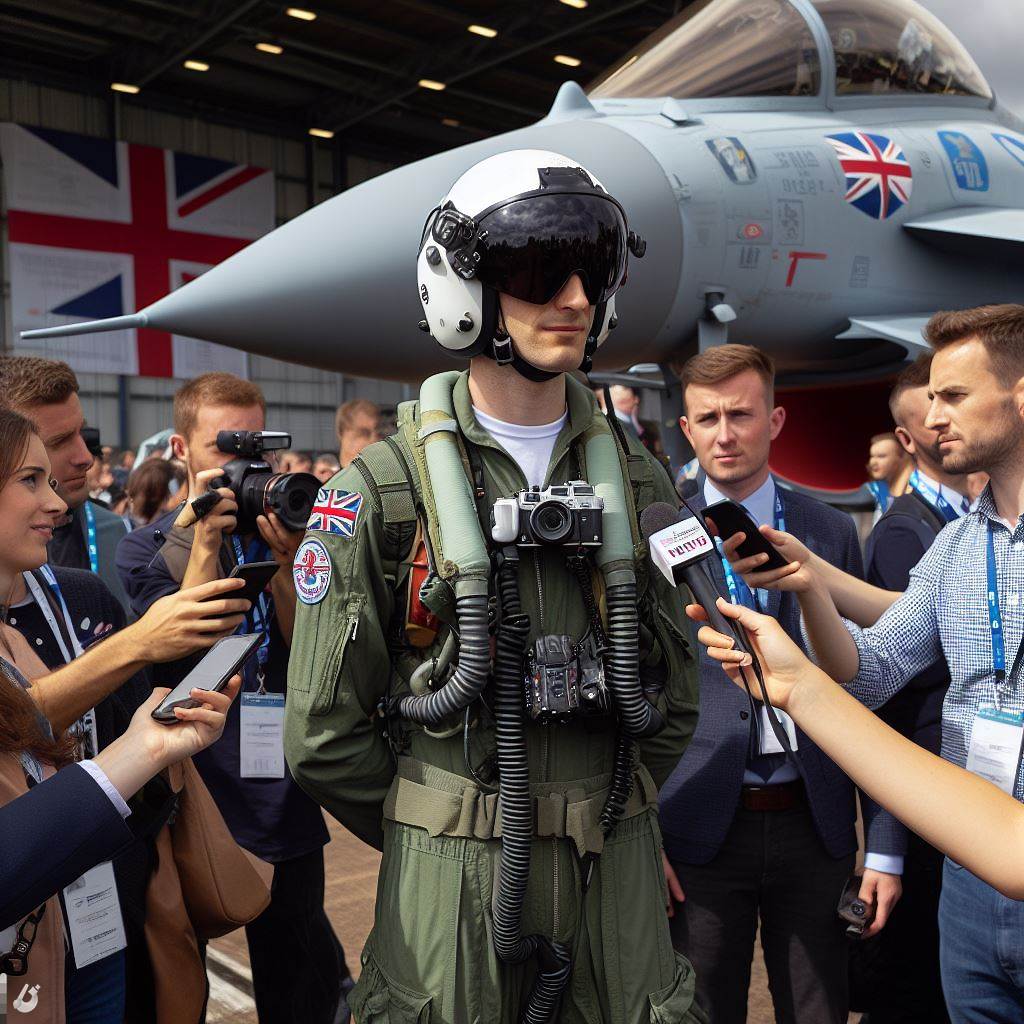Introduction
In the vast history of aviation, numerous British pilots have made significant contributions and left an indelible mark.
Their accomplishments have not only shaped the field of aviation but also inspired generations of aspiring pilots.
Join me as we delve into the remarkable stories of these famous British pilots and explore the impact they have had on aviation history.
From the pioneering days of flight to the modern era, these pilots have showcased immense bravery, skill, and determination.
They have pushed the boundaries of what was once thought possible, proving that with perseverance and a dash of daring, humans can conquer the skies.
Their achievements range from breaking speed records and crossing continents to serving during times of war.
Their names have become legendary, synonymous with the spirit of adventure and the pursuit of excellence.
Through their daring expeditions, they have captivated the imagination of people across the globe.
We will examine the lives of pilots such as Charles Rolls, who co-founded Rolls-Royce and became the first Briton to be killed in an aviation accident, and Amy Johnson, the first woman to fly solo from Britain to Australia.
We will also explore the feats of Douglas Bader, who overcame the loss of both legs to become a celebrated World War II fighter pilot.
Each of their stories is a testament to the unwavering human spirit, showcasing the heights that can be achieved when passion, skill, and determination converge.
Through their extraordinary adventures, these British pilots have forever etched themselves into aviation history.
Let us now embark on a journey to learn more about these remarkable individuals and their lasting impact.
Early Pioneers
The early pioneers in British aviation
- Samuel Cody: A prominent figure, known for his contributions to British aviation.
- Alliott Verdon Roe: Another key figure, who played a significant role in the development of aviation in the UK.
Their contributions to the development of aviation in the UK
- Samuel Cody’s contribution: He developed and flew the first fully British powered aircraft in 1908.
- Alliott Verdon Roe’s contribution: He designed and built the first all-British aircraft, the Avro 1, in 1908.
Both Cody and Roe were pioneers in experimenting with aircraft designs and pushing the boundaries of aviation.
Cody’s achievement paved the way for the British Royal Army’s interest in aviation and led to the formation of the Royal Flying Corps.
Personalized UK Career Consulting
Receive tailored career guidance designed just for you. Get actionable steps and expert support to boost your career in 1-3 days. Take control of your career now.
Get StartedRoe’s Avro marked a significant milestone, as it was the first aircraft to be put into production in the UK.
Their work encouraged innovation and inspired other aviation enthusiasts to follow their path.
Their contributions to British aviation laid the foundation for future developments and advancements in the field.
The early pioneers played a crucial role in the growth and establishment of the aviation industry in the UK.
Their achievements not only impacted British aviation but also influenced the global aviation community.
The efforts of Cody and Roe showcased Britain’s capabilities and potential in the field of aviation.
Their passion and dedication to experimentation contributed to the rapid progress of aviation technology.
Cody and Roe’s work served as motivation for other inventors and engineers to pursue their dreams in aviation.
The early pioneers’ accomplishments marked the beginning of a new era in aviation history, both in Britain and worldwide.
Their pioneering spirit and perseverance continue to inspire modern aviators and shape the future of aviation.
The contributions of Cody and Roe were instrumental in establishing the UK as a leading force in the aviation industry.
Their legacy lives on through the advancements made possible by their groundbreaking work.
The early pioneers’ dedication to aviation laid the groundwork for the technological achievements of today’s aircraft.
We owe a debt of gratitude to the early pioneers for their invaluable contributions to British aviation history.
Your Dream Job Starts with a Perfect CV
Get a tailored CV and cover letter that captures your unique strengths and stands out in your industry. Let us help you make an unforgettable first impression.
Get StartedRead: Navigating UK Weather: Tips for Pilots
World War I Heroes
During World War I, several British pilots emerged as heroes, making significant contributions to the war effort.
This section will explore some of these famous pilots, including Albert Ball and Edward Mannock, and discuss their remarkable aerial combat accomplishments.
The British pilots who made significant contributions during World War I
Albert Ball
- Albert Ball, a British flying ace, was one of the most renowned pilots of World War I.
- He achieved 44 victories in the air and became a national hero in Britain.
- Ball was known for his aggressive flying style and extraordinary marksmanship skills.
- His exceptional bravery was demonstrated in various dogfights against the German enemy.
- Tragically, Ball was killed in action in May 1917 at the age of 20.
Edward Mannock
- Edward Mannock was another exceptional British pilot in World War I.
- He is credited with shooting down 73 enemy aircraft, making him one of the most successful pilots.
- During his career, Mannock displayed great determination and leadership in the air.
- He was awarded the Victoria Cross, the highest military decoration, for his outstanding bravery.
- Mannock tragically died in combat in July 1918, leaving behind a legacy of courage and skill.
Impact on the War Effort
The accomplishments of pilots like Albert Ball and Edward Mannock had a significant impact on the overall war effort.
- Firstly, their successes in aerial combat provided a much-needed morale boost to the British forces.
- Their bravery and skill inspired other pilots and instilled confidence in the Allied powers.
- Moreover, their victories disrupted enemy plans and weakened the German air force.
- By shooting down numerous enemy aircraft, they helped maintain British air superiority.
- These pilots’ dedication and sacrifice contributed to the eventual victory of the Allied forces in World War I.
In fact, Albert Ball and Edward Mannock were true heroes of World War I.
Their remarkable accomplishments in aerial combat and their impact on the war effort cannot be overstated.
These pilots not only displayed exceptional bravery and skill but also inspired others and contributed significantly to the eventual Allied victory.
Their legacies continue to be remembered and celebrated as a testament to their heroism.
Read: The Impact of Brexit on UK Pilots
Post-World War I Era
During the Post-World War I era, British pilots played a crucial role in advancing aviation.
Two notable figures who made significant contributions during this time were Amy Johnson and Bert Hinkler.
Let’s take a closer look at their record-breaking flights and their impact on aviation technology.
British pilots who made advancements in aviation after World War I
Amy Johnson
In 1930, Amy Johnson became the first woman to fly solo from England to Australia.
Her journey covered an astounding 11,000 miles and took her 19 days.
Optimize Your LinkedIn for Success
Boost your LinkedIn profile with a professional bio, keyword-rich headline, and strategic recommendations that attract recruiters. Stand out from the crowd and get noticed.
Optimize NowJohnson’s accomplishment not only broke gender barriers but also showcased the potential of long-distance air travel.
Bert Hinkler
Bert Hinkler was an Australian-born British pilot who made remarkable achievements in aviation.
In 1928, Hinkler completed the first solo flight from England to Australia, covering 15,000 miles.
His accomplishment was groundbreaking, inspiring a new wave of exploration and air travel possibilities.
Contributions to Aviation Technology
Amy Johnson and Bert Hinkler’s record-breaking flights fueled advancements in aviation technology.
Their journeys highlighted the need for reliable and efficient aircraft for long-distance flights.
These pilots became symbols of the potential for aviation technology and encouraged further innovation.
Amy Johnson’s Legacy
Apart from her historic flight to Australia, Johnson had numerous other notable achievements.
She established several records for long-distance flying and broke barriers for women in aviation.
Johnson’s determination and passion inspired generations of female pilots, encouraging gender equality in aviation.
Bert Hinkler’s Legacy
Besides his solo flight to Australia, Hinkler made several other noteworthy achievements
He set speed records and pioneered new navigation techniques that enhanced aviation safety.
Hinkler’s legacy contributed to the rapid development of aviation technology in the interwar period.
Overall Impact
The achievements of Amy Johnson and Bert Hinkler had a profound impact on the aviation industry.
Their record-breaking flights sparked public interest in aviation, leading to increased investment.
The desire for faster and safer air travel led to advancements in aircraft design and navigation systems.
Amy Johnson and Bert Hinkler, through their daring endeavors, made significant contributions to aviation technology.
Their record-breaking flights challenged societal norms and inspired future generations of pilots.
The Post-World War I era marked a turning point in aviation history, with British pilots leading the way in advancements and innovation.
Read: Stress Management for UK Pilots

World War II Aces
In the annals of aviation history, the brave British pilots who achieved fame during World War II hold a special place.
These courageous individuals played a pivotal role in defending the United Kingdom and showcased exceptional skill and bravery in the face of adversity.
The Battle of Britain
One of the defining moments in World War II was the Battle of Britain, which took place from July to October 1940.
This battle marked a turning point in the war and saw the Royal Air Force (RAF) fend off relentless attacks from the German Luftwaffe.
During this crucial time, British pilots demonstrated unwavering determination and resilience.
They faced overwhelming odds but managed to maintain air superiority over the skies of Britain, preventing a German invasion and ultimately securing victory.
Douglas Bader: The Unconquerable Pilot
Douglas Bader was one of the most famous British pilots of World War II.
Despite losing both his legs in a pre-war flying accident, he overcame adversity and became an inspiration to all.
Bader joined the RAF in 1939 and quickly proved himself to be a skilled pilot.
He embraced innovative tactics and possessed unmatched aerial acrobatic skills.
His fearlessness and determination made him a formidable adversary.
Not only did Bader excel in combat, but he also became a rallying figure for the RAF.
His indomitable spirit and refusal to let his physical disability hinder his abilities inspired countless others to push beyond their limits.
Johnnie Johnson: The Ace of Aces
Johnnie Johnson emerged as one of the top-scoring Allied pilots of World War II.
His exceptional skills and combat record earned him the title of the highest-scoring British pilot against the Luftwaffe.
During the Battle of Britain, Johnson recorded several victories against enemy aircraft, showcasing his unparalleled talent as a fighter pilot.
His ability to quickly assess situations, exploit weaknesses, and outmaneuver opponents established him as a true ace.
Johnson’s bravery and fearless nature were evident throughout the war.
He led his squadron with great skill, and his leadership and tactical prowess were instrumental in the success of numerous missions.
Their Bravery and Skill
The bravery and skill displayed by pilots like Douglas Bader and Johnnie Johnson were unmatched.
They faced constant danger in the air, engaging in dogfights and risking their lives to defend their homeland.
These pilots had to make split-second decisions under immense pressure, displaying incredible skill and precision in aerial combat.
Their ability to outmaneuver enemy aircraft and make the most of their aircraft’s capabilities was a testament to their exceptional training and innate talent.
The Pivotal Role in Defending the UK
British pilots played a pivotal role in defending the United Kingdom during World War II. Their success in the
Battle of Britain ensured that the Germans were unable to gain air superiority and launch a successful invasion.
By protecting British cities and intercepting enemy aircraft, these pilots became the first line of defense for the country.
Their unwavering dedication and sacrifice instilled a sense of resilience and pride in the British people, rallying their support for the war effort.
In a nutshell, the World War II British pilots, such as Douglas Bader and Johnnie Johnson, left an indelible mark on aviation history.
Their bravery, skill, and pivotal role in defending the UK during the Battle of Britain will always be remembered as extraordinary contributions to the war effort.
Read: Military vs. Commercial Piloting in the UK
Aviation Innovators
The contributions of British pilots to aviation innovation and exploration
Geoffrey de Havilland – A Magnificent Pioneer
Geoffrey de Havilland, a visionary British pilot, played a pivotal role in aviation innovation.
He designed and built numerous groundbreaking aircraft that revolutionized the industry.
The DH.98 Mosquito – The Wooden Wonder
One of de Havilland’s most notable contributions was the DH.98 Mosquito, an exceptional aircraft constructed primarily from wood.
This revolutionary design provided exceptional speed, range, and versatility.
Jet Engine Revolution – Frank Whittle
No discussion on British aviation innovation is complete without mentioning Sir Frank Whittle.
He is widely recognized as the father of the jet engine.
Turbojet Engine – A Game-changer
Whittle’s groundbreaking invention, the turbojet engine, transformed the concept of air travel.
This revolutionary propulsion system propelled aircraft to unmatched speeds and facilitated long-distance flights.
Whittle’s Jet Engine Journey
Frank Whittle started developing his jet engine concept in the 1920s.
His determination, despite initial setbacks, led to the successful creation of the first operational jet engine in 1937.
Gloster E.28/39 – First Jet-powered Aircraft to Take Flight
In 1941, the Gloster E.28/39, powered by Whittle’s jet engine, made history by becoming the world’s first jet-powered aircraft to take flight.
Breaking the Sound Barrier – English Electric Lightning
The English Electric Lightning, an iconic aircraft developed by British engineers, became the first aircraft to exceed Mach 2, breaking the sound barrier in level flight.
Lightweight Metal Skins – Advancement in Aircraft Design
British innovators, including de Havilland, introduced lightweight metal skins to aircraft construction.
This innovation significantly improved maneuverability, durability, and fuel efficiency.
Vickers Viscount – Turbo-prop Success
The Vickers Viscount, designed and manufactured in the UK, was the first successful turboprop airliner.
Its innovative engine technology revolutionized the commercial aviation industry.
The Harrier Jump Jet – Vertical Takeoff and Landing
The Harrier Jump Jet, developed by British engineers, featured vertical takeoff and landing capabilities.
This achievement brought a new dimension to military aviation and tactical warfare.
Carbon Fiber Reinforcement – Strengthening Aircraft Structures
British engineers introduced carbon fiber reinforcement to aircraft structures.
This lightweight yet incredibly strong material enhanced aircraft performance, fuel efficiency, and safety.
Concorde – Supersonic Travel
The collaborative effort between British and French engineers gave birth to Concorde, the world’s only supersonic passenger aircraft.
This technological marvel shortened transatlantic flight times drastically.
Fly-by-wire Systems – Enhanced Control and Safety
British innovation in aviation extended to fly-by-wire systems, replacing traditional mechanical controls with electronic ones.
This advancement improved aircraft handling, responsiveness, and safety.
Unmanned Aerial Vehicles (UAVs) – Remote-controlled Flight
British engineers also played a significant role in the development of unmanned aerial vehicles (UAVs) or drones.
These remotely piloted aircraft have revolutionized military operations and civilian applications.
The Future of British Aviation Innovation
British pilots and engineers continue to push the boundaries of aviation.
They strive to develop sustainable aircraft, electric propulsion systems, and advanced technologies for safer and greener air travel.
In summary, British pilots, including Geoffrey de Havilland and Frank Whittle, have left an indelible mark on aviation innovation.
Their contributions in aircraft design, jet engine technology, and other advancements have shaped the industry and paved the way for modern air travel.
With their pioneering spirit, British aviation innovators continue to shape the future of flight.
Conclusion
The achievements of famous British pilots in history are truly remarkable.
Their contributions have left a lasting impact on aviation, paving the way for future generations.
From the pioneering efforts of the Wright brothers to the record-breaking flights of Amy Johnson and the heroic actions of Douglas Bader, these pilots have inspired a sense of adventure and exploration.
Their courage and determination have revolutionized the way we view air travel and have significantly advanced the field of aviation.
They have not only pushed the boundaries of what is possible but have also paved the way for technological advancements in aircraft design and navigation.
Their influence can still be felt today, as modern pilots continue to rely on their innovations and expertise.
The legacy of these pilots serves as a constant reminder of what can be achieved with perseverance and dedication.
This blog post only scratches the surface of the rich history of British pilots.
There are many other notable British pilots whose achievements deserve recognition and exploration.
I encourage readers to delve further into this captivating subject and discover more about the incredible feats of British aviators throughout history.
Their stories are truly inspiring and serve as a testament to the indomitable spirit of human exploration and achievement.
[E-Book for Sale]
500 Cutting-Edge Tech Startup Ideas for 2024 & 2025: Innovate, Create, Dominate
$19.99 • 500 Tech Startup Ideas • 62 pages
You will get inspired with 500 innovative tech startup ideas for 2024 and 2025, complete with concise descriptions to help you kickstart your entrepreneurial journey in AI, Blockchain, IoT, Fintech, and AR/VR.




